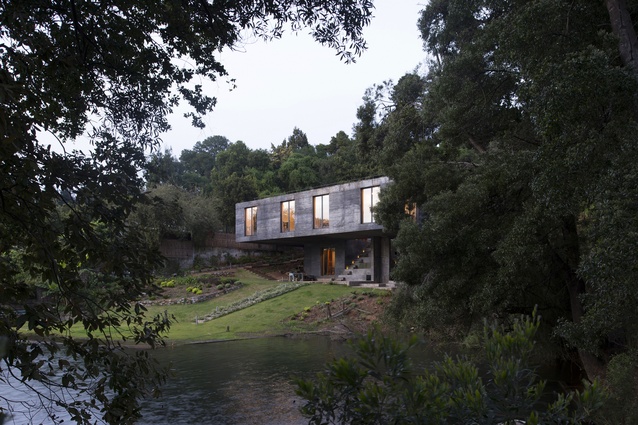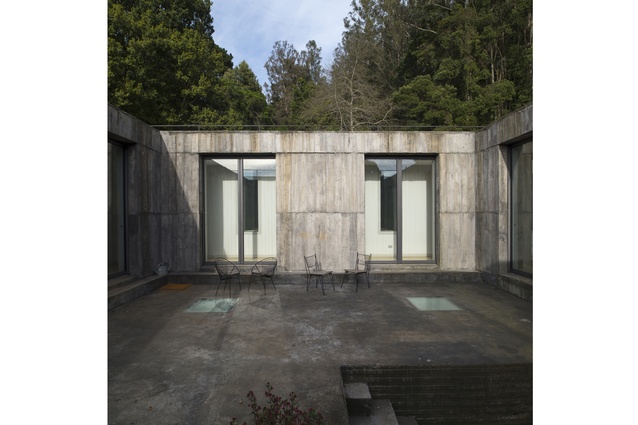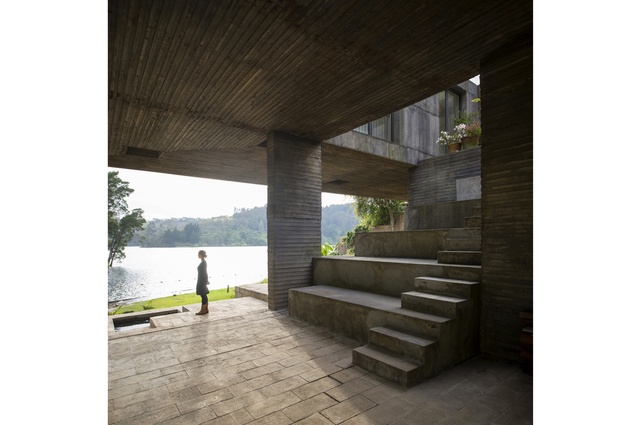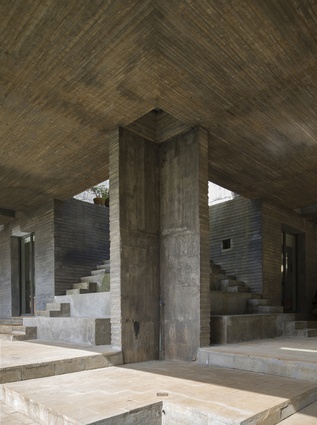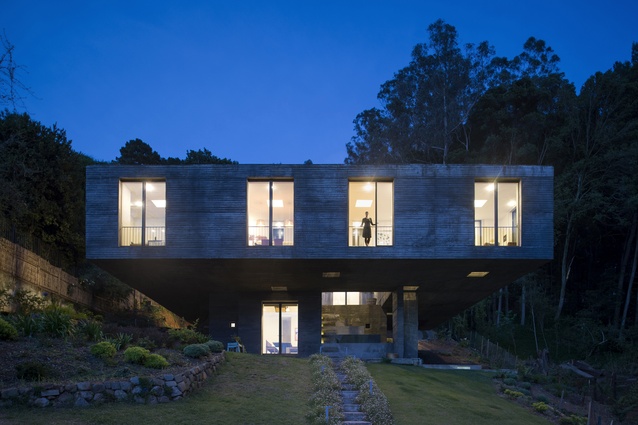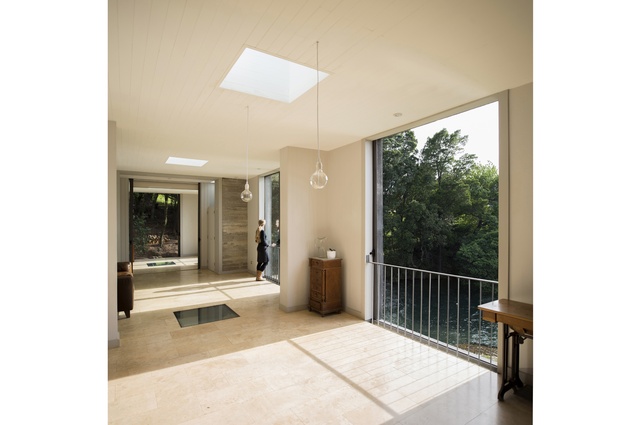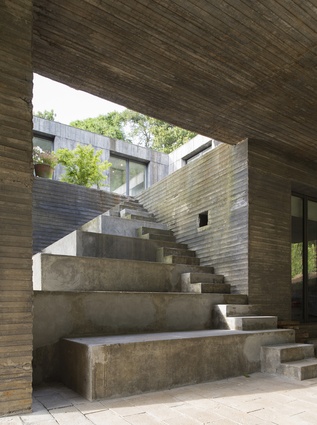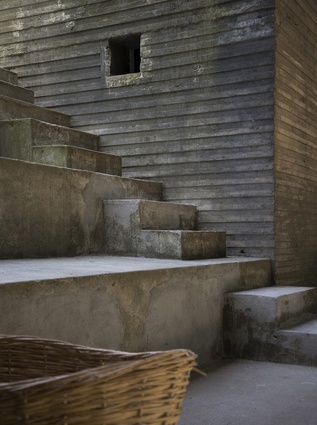The Guna House
The Guna House sits as “a stony mass in apparent repose” in a sloping lagoon bay surrounded by a forest of native trees. The poise of its cantilevered mass balanced on a compact pedestal below belies the everyday functions inside: those of a family home. Some abodes scream ‘I am house!’, but the Guna house is calm and meditative as it sits in the landscape as if it has been there since the dawn of time.
“The house can be understood as a monumental object… it embodies a sense of memory, of resemblance to another time. This might be read as a veiled function of the house, of a monumental domesticity,” says Mauricio Pezo, one-half of the art and architectural partnership Pezo von Ellrichshausen and Sofia von Ellrichschausen. Located in Llacolen, San Pedro de la Paz, in the south of Chile, Guna is a recent work in a series of uncompromising buildings that share a rigorous lineage and similar formal expression. All works, in their own quiet ways, respond to the environment in which they reside.
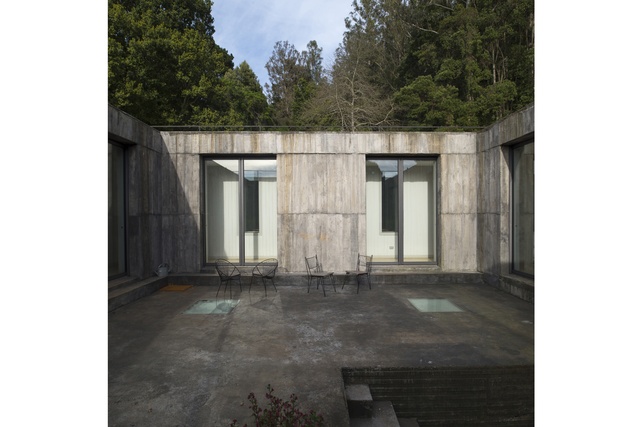
The upper floor is designed using a grid of 16 squares, with the outer rooms of the platform look into a central patio that is the same size as the lower floor. The result is “a monolithic piece composed by two very distinctive parts: a podium and a platform. This vertical difference establishes two opposite relationships with the terrain: one floating and the other sinking into it,” says Pezo.
A spectacular moment occurs where one quadrant of the patio is cut back in the north corner to allow for stairs, on a diagonal, to connect the upper floor to the lagoon. The introduction of the diagonal serves to break down the grid and align the circulation with the lagoon.
Many innovations in this house bring to mind Renaissance-esque architectural ideals such as the Piano Nobile, the covered belvedere, and elevated rotunda. Circulation also appears classically inspired, where rooms flow onto rooms, and not through corridors. These nods to the past are neither obvious nor slavish, but are well-considered for the site. The architects themselves are less concerned with historical referencing than with the creation of a unique domestic artefact.
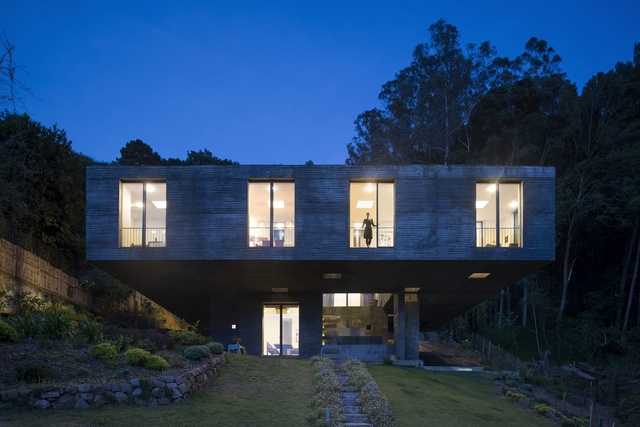
“Guna has a very precise arrangement of domestic activities according to the cardinal orientation and to the picturesque natural landscape. It is an interconnected sequence of rooms, a ring with crossed extensions, and a patio without a quarter of its floor,” says von Ellrichshausen.
The Guna House is an idea made manifest in concrete form, where the domestic functions bend to its geometric will. Rooms are portioned and located for specific uses that are not envisioned to change. “This is a domestic realm precisely calibrated for the family of five members who live there: a family with the confident prospect of living there as long as they can,” says Pezo. With such discipline behind the design, you can imagine the inhabitants living a luxurious monastic lifestyle.

With so few moves in the home’s repertoire, it is the details that produce its crafted timelessness. The rhythmic and predicable proportions of the 24 windows in proportion 2:1 and 33 skylights in proportion 1:1 create a sense of the familiar. “We are interested in allowing an experience from within that tends to forget about the singularity of the opening in itself, in order to focus your eyes, and also your mind, on what is beyond, on all of that which architecture is not,” says von Ellrichshausen.
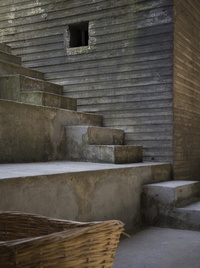
This singularity of design extends to the spartan material and colour palette. The exterior mass is horizontal textured concrete that patinas with age and is “soft and almost transparent in reference to the dark green surrounding vegetation”. The interior walls and ceilings are made of painted, light grey, rusticated weatherboard with pale travertine floors. The tone varies depending upon the time of day and the light emitted through skylight voids. This house is fixated on revealing the passing of time, as the architects state, “we practice with the understanding that, as David Leatherbarrow wrote, we make “buildings that last for places that may not”.” The Guna House is a testament to the timeless beauty of utter simplicity.
Click here for an interview with the architects.


